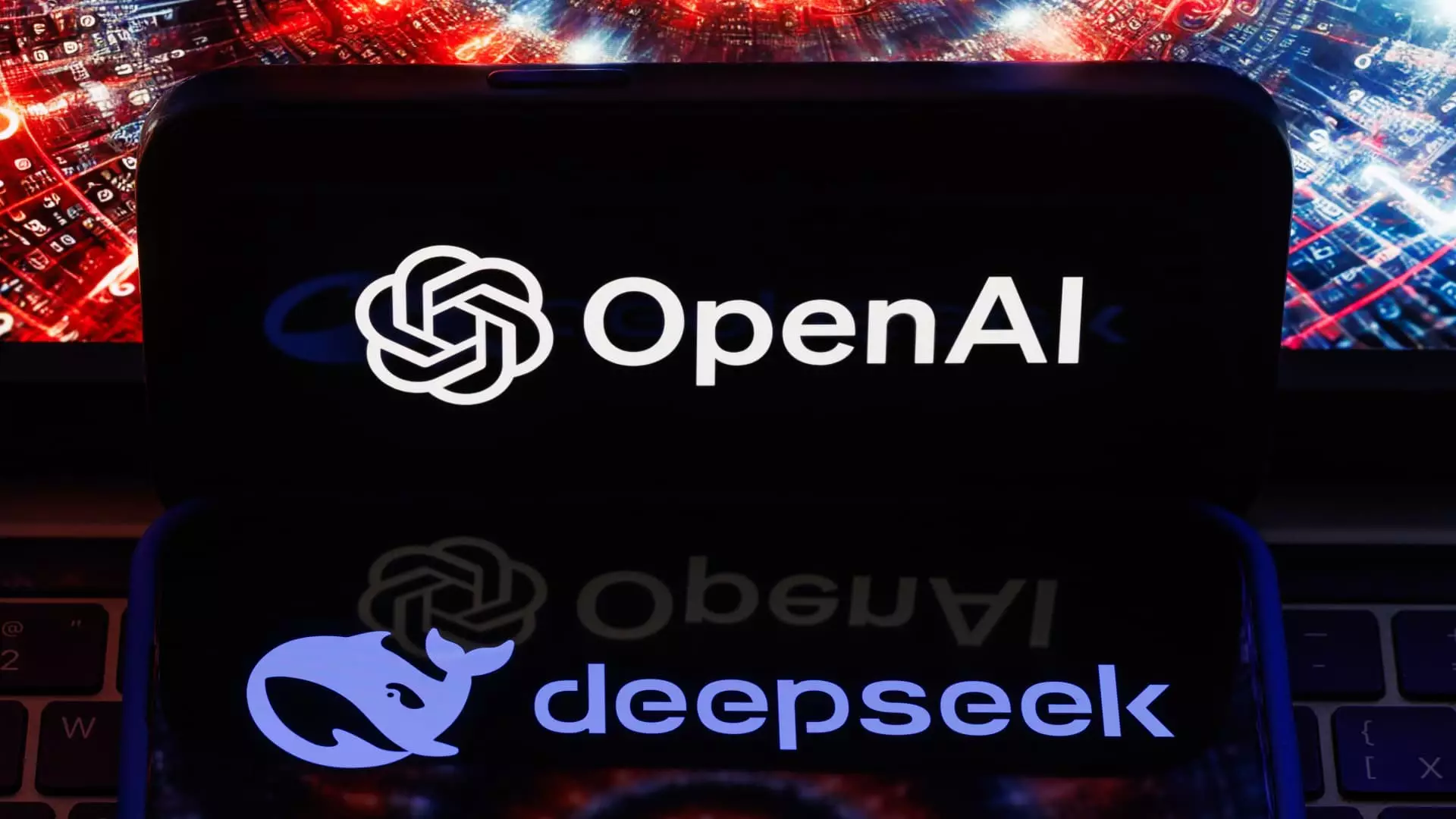The recent technological strides made by DeepSeek, a Chinese artificial intelligence (AI) lab, have sparked intense discussions among global tech leaders about the dynamics of the AI race between the United States and China. Observations made during the Artificial Intelligence Action Summit in France paint a picture where DeepSeek’s capabilities challenge the previously held assumptions regarding China’s position in the global AI hierarchy. This development not only underscores the competitive spirit in AI innovation but also stresses the complexities of geopolitical relations in this domain.
DeepSeek has made headlines for its cost-effective AI model, claiming to have developed a system with a training expense of under $6 million. This figure starkly contrasts with the massive investments that established firms in the U.S., such as OpenAI and Anthropic, have made in AI research and model training. The implications are vast—if DeepSeek’s technologies can deliver comparable or superior performance at a fraction of the cost, it poses a significant threat to the established norms of the AI sector. Chris Lehane, OpenAI’s Chief Global Affairs Officer, highlighted that the emergence of DeepSeek illustrates a palpable competition between American-led democratic approaches to AI development and those dictated by the Chinese Communist Party, showcasing a landscape where two distinct philosophies coexist.
However, the revelations surrounding DeepSeek are not without caveats. Critics have raised concerns about potential biases embedded in its AI models, notably regarding sensitive historical events such as the Tiananmen Square massacre. This aspect points to a broader issue of censorship and control that might permeate AI systems originating from authoritarian regimes. While the performance of DeepSeek’s R1 model seems to challenge Western advancements, the ethical implications cannot be overlooked. As the world embraces AI technologies, the principles governing their development and deployment should invoke critical examination.
The performance metrics released by DeepSeek suggest that their R1 model could rival OpenAI’s own offerings, suggesting a potential paradigm shift in how AI can be developed and implemented. This competition compels experts and businesses to reassess the previously entrenched belief that innovation in AI is predominantly a U.S.-centered endeavor. The advent of new methodologies, such as model distillation, raises questions about the ways in which AI models can be enhanced, especially in a landscape dominated by heavyweights equipped with substantial resources.
Industry leaders, including Reid Hoffman from Greylock Partners, emphasize that DeepSeek’s emergence signifies a pivotal moment in understanding the technological capabilities of China. As the balance of power in the AI realm shifts, the conventions that have long placed America at the forefront of technology innovation are now being challenged. Abishur Prakash’s comments on the limited understanding that U.S. policymakers have regarding China’s tech advancements further emphasize the need for a nuanced approach. The recognition that the technological divide may not be as expansive as once perceived is a crucial insight for strategic planning on both sides.
While DeepSeek’s innovations are noteworthy, there are significant questions about the authenticity of their claims concerning development costs and methodologies. Reports suggest that DeepSeek’s operational expenditures may be significantly higher than publicly stated, casting doubt on their assertions of low-cost AI delivery. Such discrepancies highlight an essential challenge for investors and stakeholders in assessing the viability of new entrants in the AI market. Industry stalwarts echo concerns that large-scale models, which dominate current AI deployment strategies, will remain favored in the long term, despite the relatively agile offerings from startups like DeepSeek.
The rise of DeepSeek marks a critical juncture in the U.S.-China competition in artificial intelligence. While the advances made by DeepSeek merit attention, their implications stretch beyond technology alone—they are intrinsically tied to geopolitical narratives and ethical considerations that shape global perspectives on AI. As the industry navigates this complex landscape, it must remain vigilant about the responsibilities that come with technological advancement, ensuring that innovation does not overshadow fundamental human values. The ongoing dialogue among tech leaders suggests that while the competition is intensifying, the road ahead requires a careful balance between ambition and caution in the pursuit of artificial intelligence.


Leave a Reply
You must be logged in to post a comment.